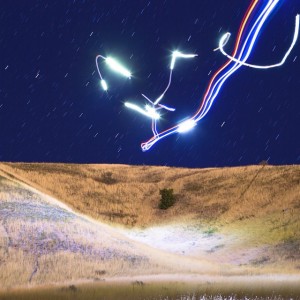What do you get when you cross a nerd with a kid who doesn’t quite fit into today’s school structure? You end up with an engineer whose creativity hasn’t been tainted by the structure of making the grade. You also get someone like Daniel Riley.
Since his first Lego set, Riley has been building designs that are off the beaten path. He started with pneumatic Lego engines that ran off of compressed air. But where his technical knowledge ends, his knowledge of filming picks right up. He published his first YouTube video when he was 12. With the combined skills of creativity, cinematography, and design Riley has become an innovator in today’s drone community.
Today, Riley runs two YouTube channels, Stratus Productions and rctestflight. Stratus Productions was started because of Riley’s love of action actions sports films. Riley and his friends wanted to start their own production company to create the sort of films being produced by warren miller and the likes. He found a need for unique shots and soon filled that need with footage from his home made quadcopters.
Rctestflight was inspired by rcpowers another rc airplane youtube channel. In short rctestflight is the technological aspects of Riley’s work while Stratus Productions is where he displays what his designs can do.
Riley has done a lot of product reviews and testing on rctestflight for drone component manufactures. He reviewed and tested a variety of products from multirotor frames to autopilot systems. This gave Riley experience with many of the innovations in the drone world so that he could better understand and chose the right products for his own designs.
Riley started innovating in the drone community before it was much of a community. He claims to be one of the first hobbyists to put a GoPro on a drone. Originally he was attaching cameras to airplanes to get unique shots for his YouTube videos but he soon discovered just how useful his drones could be. By attaching a camera to a helicopter he had far more control of the shot and was able to utilize the technology in other productions.
Riley’s first multirotors used parts from his single rotor helicopters for stabilization and were built out of wood and foam in 2011. He built his first multirotor simply because it was a novel idea, something that had been done very little. Since that first helicopter he has upgraded his frames with carbon fiber, he has upgraded his carrying capacity with more motors, and increased the quality of footage with better cameras.
Today he is being hired by companies and individuals for professional work. One of his biggest projects was capturing aerial shots for Fisher Productions and the TV show Kings of Crash. He has also worked with real estate agents, other production companies, and artists.
Riley also designs and sells products for the drone cinema industry. His innovative products include an array of vibration isolators and multirotor frames. Riley “identifies a need in [his] own multirotors and designs products to fill those gaps”. He has also started a Kickstarter to beef up his vibration isolator to use in the professional cinema world. He has turned his company into a globally active one because of the worldwide use of YouTube and social media. Riley sticks out as an innovator because he not only cutting edge with the use of drones but also making them.
One of the areas Riley has excelled in is the adaptation of carbon fiber. He has teamed up with Rock West Composites to feature their carbon fiber tubing and plates to build his multirotors. He has found that the carbon fiber is a fantastic way to shave weight while still being stronger than his previous designs mostly made from aluminum.
Riley is an optimist in the future of drones. He expects them “to become an integral part of U.S. airspace.” Riley makes an effort to be a conscious drone pilot and tries to limit his videos to only positive publicity for drone. Nonetheless, in order to get the shots that make his videos such a hit he sometimes takes risks that could be looked down upon from some viewers. But in the long run he is exposing people to one of the many positive uses of drones and inevitably opening the door for expanded use of drones in the future.



